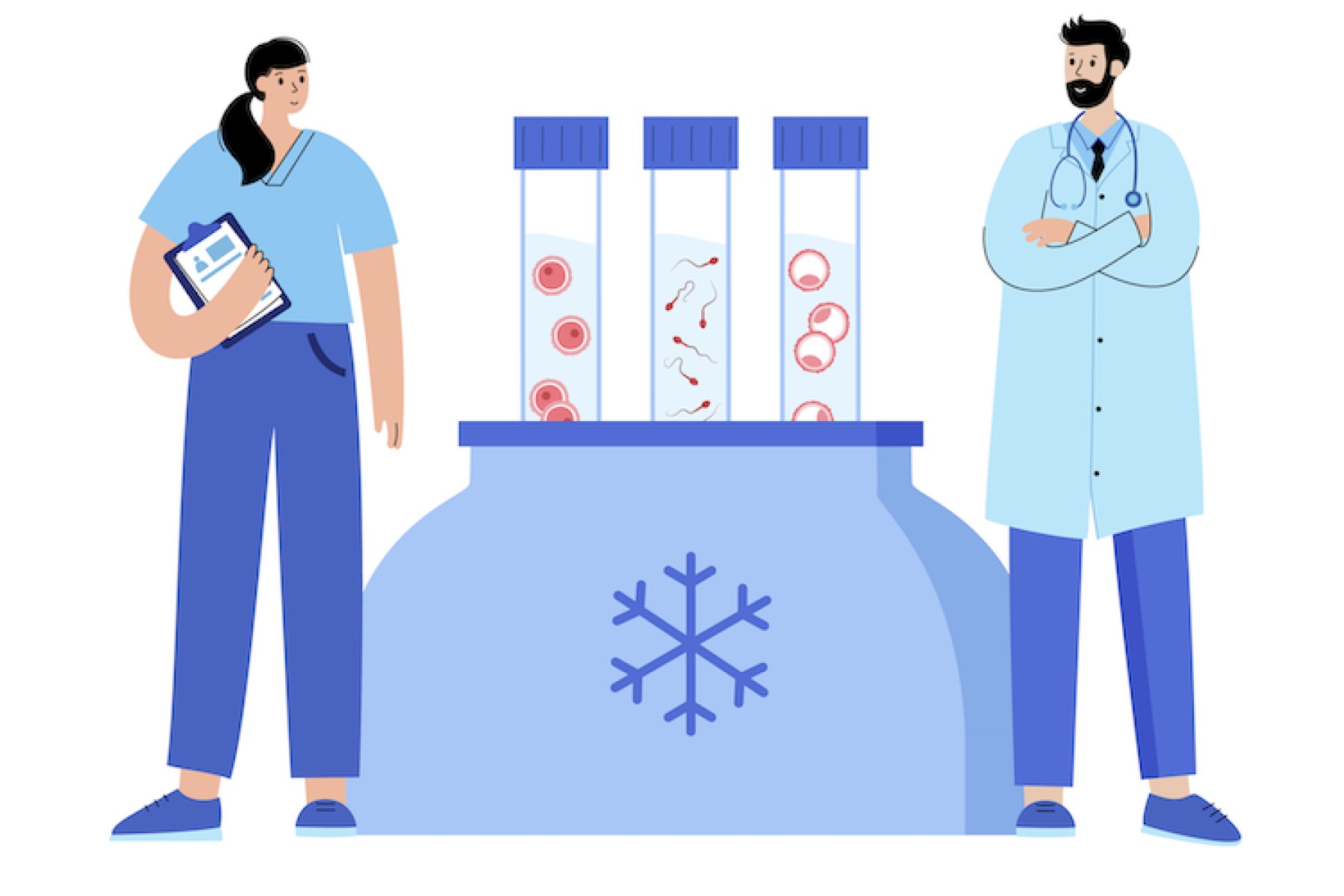
What is the Frozen Embryo Transfer (FET) protocol?
The Frozen Embryo Transfer (FET) protocol requires less "heavy" treatment than in vitro fertilisation (IVF).
Because the embryos have already been formed (during IVF), it is not necessary to stimulate the ovaries to any great extent.
The aim of the frozen embryo transfer protocol is to host the embryo in a suitable environment. To achieve this, the endometrium, which corresponds to the uterine mucosa that lines the inside of the uterus, must reach a thickness of between 7 and 8 mm, corresponding to the 19th - 21st day of the menstrual cycle.
To avoid the failure of a frozen embryo transfer due to a uterine mucosa that is too thin, it is important to prepare the endometrium for implantation to encourage embryo implantation.
There are three different ways of preparing the endometrium for embryo transfer:
Frozen embryo transfer on a natural cycle
In a TEC protocol based on a natural cycle, the gynaecologist simply monitors the menstrual cycle by taking blood samples and performing ultrasound scans. Once the ideal endometrial thickness for implantation has been reached, the fertility specialist waits for a spontaneous LH peak, or triggers ovulation with Ovitrelle®.
In both cases, this allows the progesterone required to transform the endometrium for pregnancy to rise. Transfer of the frozen embryo(s) is then scheduled. Depending on the case, the doctor may decide to add vaginal progesterone (Utrogestan®, Progestan®) in addition to that produced naturally a few days before embryo implantation.
Written by:
Dr Sarah Peyrelevade,
Foch Hospital